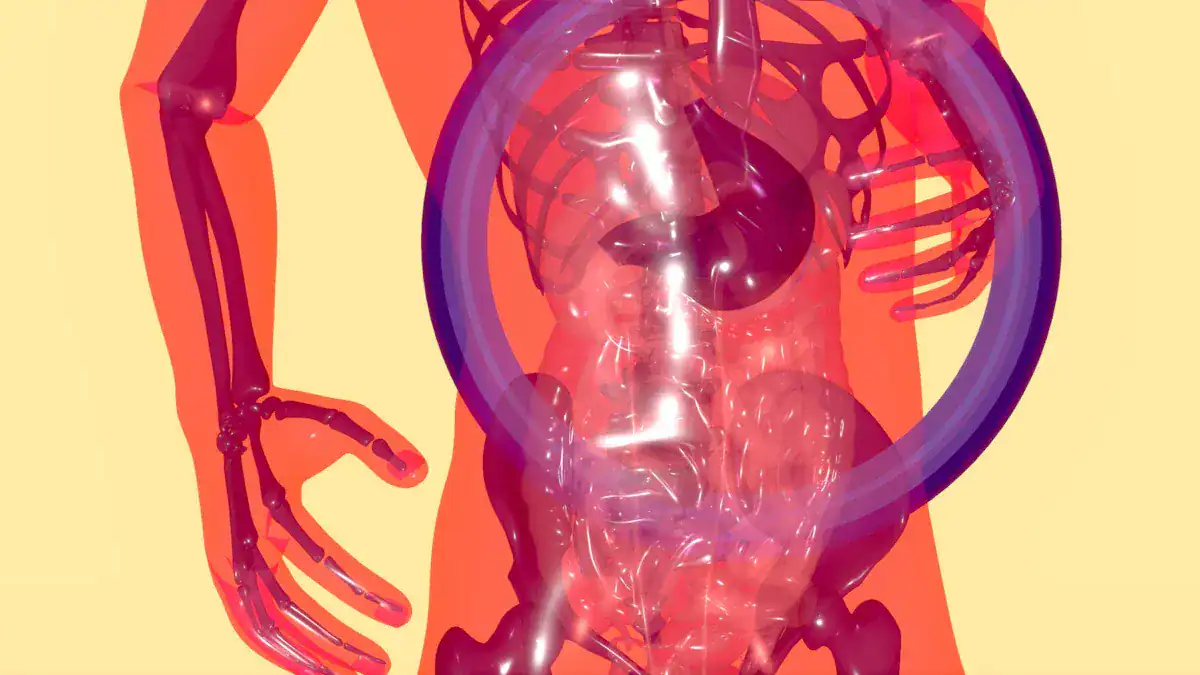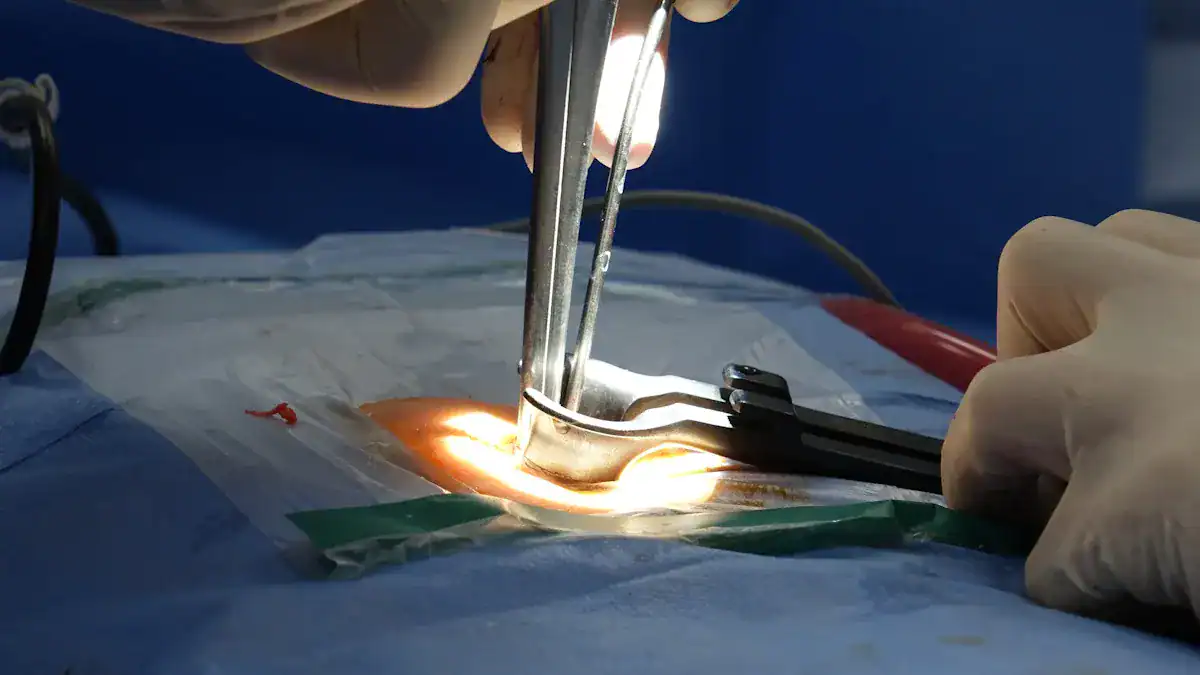
Hyperkinetic gallbladder, also known as hyperkinetic biliary dyskinesia, describes a condition. The gallbladder contracts too forcefully or too frequently. This causes symptoms despite the gallbladder often appearing normal on standard imaging.
It differs from common gallbladder issues like gallstones. This acalculous biliary problem, or biliary hyperkinesia, presents unique challenges. This blog explores its causes, symptoms, diagnosis, and treatment.
Key Takeaways
- Hyperkinetic gallbladder means your gallbladder squeezes too much. This causes pain, but there are no gallstones.
- Symptoms include pain in your upper belly, nausea, and bloating. These often happen after eating fatty foods.
- Doctors use a special test called a HIDA scan to see if your gallbladder is overactive. This test measures how much bile your gallbladder pushes out.
- The main treatment for hyperkinetic gallbladder is surgery. Doctors remove the gallbladder to stop the pain.
- After surgery, most people feel much better. They have less pain and can live a normal life.
What is Hyperkinetic Gallbladder?

Defining the Condition
Hyperkinetic gallbladder describes a condition where the gallbladder contracts too much. This means the gallbladder empties bile at an unusually fast rate. Doctors often diagnose this specific type of biliary dyskinesia when a hepatobiliary iminodiacetic acid (HIDA) scan shows a Gallbladder Ejection Fraction (GBEF) of 80% or greater.
This high ejection fraction indicates the gallbladder is overactive. It is important to note that hyperkinetic gallbladder is an “acalculous” condition. This means it occurs without the presence of gallstones. This functional gallbladder disorder can cause significant biliary pain, even though the gallbladder itself appears normal on many standard tests.
The unusual function of the gallbladder leads to symptoms. This condition is also known as biliary hyperkinesia.
Distinguishing from Other Gallbladder Issues
Hyperkinetic gallbladder differs significantly from more common gallbladder problems. For example, cholelithiasis involves physical gallstones inside the gallbladder. These stones can block bile flow or cause inflammation. In contrast, hyperkinetic gallbladder does not involve stones.
Instead, the issue lies with the gallbladder function itself. The gallbladder empties too quickly. Another common issue is cholecystitis, which is inflammation of the gallbladder, often due to gallstones. While both cholecystitis and cholelithiasis involve structural problems or inflammation, hyperkinetic biliary dyskinesia is a functional problem.
The gallbladder works too hard. This distinction is crucial for proper diagnosis and treatment of this specific gallbladder disease. Biliary hyperkinesia presents unique challenges because it lacks the visible signs of stones.
Causes and Symptoms
Potential Contributing Factors
The exact causes of hyperkinetic gallbladder are often not clear. Doctors do not always know why a person develops this functional gallbladder disorder. Some theories suggest hormonal changes may play a role. Diet can also influence gallbladder function.
Stress might also contribute to abnormal gallbladder activity. However, researchers continue to study these potential links. This condition, also known as biliary hyperkinesia, involves the gallbladder contracting too much. This overactivity of the gallbladder causes the symptoms. It is a problem with the gallbladder function itself, not with stones.
Recognizing Common Symptoms
People with hyperkinetic gallbladder experience various symptoms. The most common symptom is pain. This pain often occurs in the upper abdomen. Many individuals report nausea.
Some also experience vomiting. Bloating and indigestion are other common symptoms. These symptoms often appear after eating, especially after fatty meals. The gallbladder works harder to digest fats. This increased gallbladder function can trigger the pain. Recognizing these symptoms helps identify this specific gallbladder disease.
Characteristics of Biliary Pain
The pain from hyperkinetic gallbladder is often described as biliary pain or biliary colic. This type of pain is typically severe. It usually occurs in the right upper quadrant pain area of the abdomen. The pain can also spread to the back or shoulder blade.
A case report described a 15-year-old female. She had intermittent, colicky right upper quadrant abdominal pain. This pain radiated to her back. The pain usually started 15-20 minutes after eating. It would resolve on its own within 30 minutes. She also reported nausea when the pain was most severe. This pattern of pain is typical for biliary issues.
The pain often comes and goes. It is not constant. This makes it different from other types of abdominal pain. The intense contractions of the gallbladder cause this specific type of biliary pain.
Diagnosis and Treatment

The Diagnostic Process
Diagnosing hyperkinetic gallbladder can be challenging. This is because the gallbladder often looks normal on standard imaging tests. Doctors look for a specific set of conditions to make a diagnosis. This set is often called the diagnostic triad. It includes:
- Biliary symptoms: The patient experiences pain and other issues related to the bile system.
- Acalculous gallbladder: Imaging tests show no gallstones in the gallbladder.
- Increased gallbladder activity: Special tests show the gallbladder contracts too much.
This condition, also known as biliary hyperkinesia, requires careful evaluation. Doctors must rule out other causes of abdominal pain. This ensures the patient receives the correct treatment. The diagnosis process helps confirm that the gallbladder itself is the source of the problem.
Key Diagnostic Tests
The main test for hyperkinetic gallbladder is a HIDA scan with CCK stimulation. A HIDA scan measures how well the gallbladder empties bile. During this test, doctors give a substance called CCK. CCK makes the gallbladder contract. The test then measures the gallbladder ejection fraction (GBEF). This fraction shows how much bile the gallbladder pushes out.
A high GBEF suggests hyperkinetic gallbladder. Doctors often use a GBEF of 80% or higher as a sign of this condition. Some research even suggests an 81% ejection fraction might be more accurate. This higher number often means better symptom relief after surgery. However, different hospitals may use slightly different ways to do the HIDA scan. This can affect the exact GBEF measurement.
A study looked at the accuracy of the HIDA scan with CCK. It involved 261 patients. The study found the test was very good at finding acalculous gallbladder disease. It had a sensitivity of 95%, a specificity of 92%, and an overall accuracy of 94%. This shows the HIDA scan is a reliable tool for diagnosis.
Before the HIDA scan, doctors usually perform an ultrasound. An ultrasound helps confirm there are no gallstones. This is important because hyperkinetic gallbladder is a type of biliary dyskinesia without stones.
Treatment Options for Hyperkinetic Gallbladder
When a patient has hyperkinetic gallbladder, treatment options are limited. There are no specific medicines to stop the gallbladder from contracting too much. Lifestyle changes, like diet adjustments, might help manage symptoms temporarily.
However, these changes do not fix the underlying problem of an overactive gallbladder. For most patients, the primary and most effective treatment is surgery. This surgery involves removing the gallbladder.
Gallbladder Removal (Cholecystectomy)
Cholecystectomy is the surgical removal of the gallbladder. It is the main definitive treatment for hyperkinetic gallbladder. This surgery aims to relieve the severe biliary pain and other symptoms.
Doctors usually perform cholecystectomy using a minimally invasive method called laparoscopy. This means they make small cuts in the abdomen. They use a tiny camera and special tools to remove the gallbladder.
Many studies show that cholecystectomy is very effective for hyperkinetic gallbladder. Patients often experience significant improvement in their symptoms. The goal of this treatment is to stop the pain caused by the overactive gallbladder.
Here is how successful cholecystectomy can be:
| Study/Case Series | Symptomatic Improvement | Complete Resolution |
|---|---|---|
| This case series | 100% | 100% |
| DuCoin et al. | Almost 90% (when symptoms reproducible with CCK) | Almost 90% |
| Saurabh et al. | 90% | 74% |
| Lindholm et al. | 100% | 100% |
| Holes-Lewis et al. | 97% | 79% |

The chart above shows that most patients feel much better after surgery. Many even have complete relief from their symptoms. This makes cholecystectomy a highly recommended treatment for this type of biliary dyskinesia, also known as biliary hyperkinesia. The removal of the overactive gallbladder stops the source of the problem.
Living with the Condition
Managing Symptoms Pre-Treatment
Patients often seek ways to manage their symptoms before surgery. Non-surgical options for hyperfunctional gallbladder patients are limited. These include medications like amitriptyline, famotidine, and PPIs. A low-fat and low-carbohydrate diet may also offer some relief.
However, these non-surgical treatments show limited success. One study found only 7.69% of patients experienced symptomatic relief. For managing biliary colic pain, NSAIDs are effective. These include diclofenac, ketorolac, tenoxicam, and flurbiprofen. NSAIDs provide superior pain relief compared to other analgesics. They offer fewer doses and longer duration of action. NSAIDs are safe and effective for pain control. They can also reduce the likelihood of further complications.
Post-Surgery Recovery
After gallbladder removal (cholecystectomy), patients experience a recovery period. Short-term side effects include diarrhea as the digestive system adjusts. Constipation can occur from pain medications. Gas and gas pain are common from the gas used in laparoscopic surgery.
Nausea is also a side effect of pain medications. Some patients report general symptoms like indigestion, acid reflux, gas, bloating, and diarrhea. Persistent symptoms can also occur. These include abdominal pain (36.5% after 6 months), flatulence (17.8%), and restricted eating (14.5%).
New-onset frequent bowel movements (9.6%) and diarrhea (8.4%) are also possible. Dyspepsia or vague abdominal discomfort may persist. Bile acid diarrhea can happen due to excessive bile acids. This often resolves spontaneously. Dietary adjustment or bile acid–binding resins can provide relief. This helps manage post-operative symptoms.
Long-Term Outlook
The long-term outlook for patients after cholecystectomy for hyperkinetic gallbladder is generally positive. Many patients experience significant relief from their symptoms. The surgery provides definitive symptomatic relief for most individuals. Studies show varying rates of complete symptom relief.

Some studies report 100% complete symptom relief. Others show rates around 61% to 86%. One study found 91.3% of patients experienced improvement or complete relief of their preoperative pain. This demonstrates the effectiveness of cholecystectomy for the overactive gallbladder. It offers a good chance for lasting symptomatic relief and improved quality of life.
Hyperkinetic gallbladder, or biliary hyperkinesia, causes significant biliary pain and discomfort. This biliary hyperkinesia is challenging to diagnose due to the absence of gallstones.
Recognizing specific biliary symptoms, such as biliary colic, right upper quadrant pain, and postprandial discomfort, is crucial for this biliary condition. A HIDA scan with a high ejection fraction confirms the diagnosis of this overactive gallbladder.
While cholecystectomy is the primary treatment for biliary hyperkinesia, understanding this biliary dyskinesia and available options improves quality of life. Consult healthcare professionals for personalized advice regarding your gallbladder and its biliary issues. This helps manage biliary hyperkinesia effectively.



